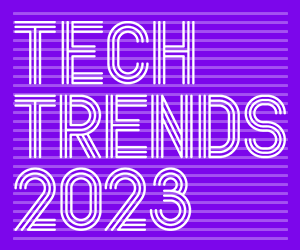With 2022 behind us and enterprises looking to 2023 and beyond, the horizon is hazy. There are conflicting opinions among experts about whether the U.S. economy will experience a recession in 2023, and higher-than-normal inflation is expected to linger but come down next year, experts say.
What does all of this mean for businesses and the technologies they rely on to meet customers’ demands? For one thing, they’ll have to be nimbler than ever. “For the next several years, leading technology providers must play a leading role in helping enterprises navigate the current storms of disruption,” Rick Villars, IDC’s group vice president of worldwide research, says in the firm’s IDC FutureScape 2023 presentation.
Enterprises’ use of managed detection and response (MDR) tools for cybersecurity, their need to modernize legacy applications and their continued use of hybrid cloud infrastructure are expected to be among the key technology trends to watch in 2023, industry analysts say. Here’s a closer look at those trends.
1. Zero Trust and MDR Will Help Bolster Enterprises’ Cybersecurity
Cybersecurity is a constant concern for enterprises, and it’s not difficult to see why. A June 2022 report from Zscaler found that ransomware attacks had increased 80 percent year over year. Yet many enterprises are updating their cybersecurity strategies to focus on risk mitigation as a business investment rather than taking aim at ransomware or other specific threats.
One priority will be a continued investment in zero-trust architecture. Research firm Gartner predicts that 60 percent of organizations will use zero trust as a starting point for cybersecurity by 2025.
Craig Robinson, research vice president for security services at IDC, notes that zero trust is a journey, so a business’s use of it depends on where it started. Many enterprises have focused on a key pillar of zero trust, identity and access management, he notes. Roughly half of organizations have cybersecurity insurance, but enterprises will need to continue to mature IAM and authentication controls to maintain that coverage.













